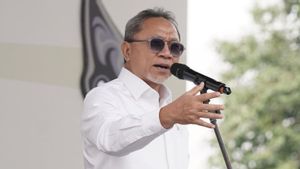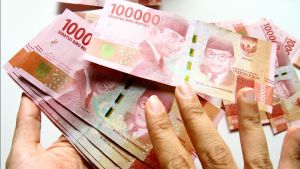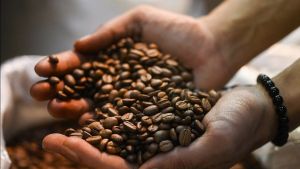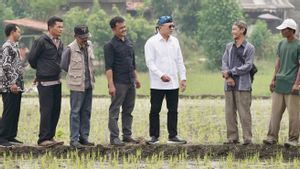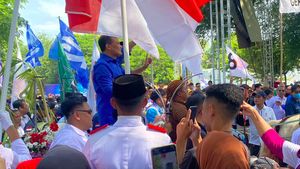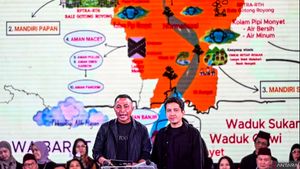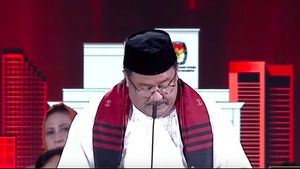JAKARTA - Biomass is an energy resource that is quite large in Indonesia and is a renewable energy resource that has continuous and sustainable characteristics so that it can be more guaranteed.
Utilization of biomass as an energy source, can be used directly to generate electrical energy through various processes, one of which is co-firing, in which biomass is combined in fossil fuel plants, coal.
Academic from Gajah Mada University (UGM) Dr. Ir. Tumiran M.Eng said that the benefits do not require the construction of new power plants.
Co-firing efforts within PT PLN (Persero) need to be appreciated and appreciated as an effort to accelerate the use of New and Renewable Energy (EBT), so that the contribution of EBT in the national energy mix can continue to be increased.
In line with the National Energy Policy, the target goal of 23 percent of NRE contribution in 2025, one of the goals is to create energy independence and create new jobs in the energy sector, so that the contribution of EBT provides support for economic growth, mastery of technology and the creation of new jobs.
The choice of accelerating the use of Biomass at PT PLN's PLTU is the right choice.
This is expected to stimulate the community's economy and local potential can also develop.
According to Tumiran, the national biomass can be sourced from various variances, such as processed wood residue, or the development of energy plants and utilizing community processed waste.
"Scenarios and efforts to obtain biomass in large quantities are not easy, the challenges include pricing regulations and the role of the Government which needs to give more attention (guidance)," added Tumiran in an official statement, Monday, July 4.
The development of biomass to increase the use of NRE requires a touch of the Government's hand. This is because a supportive policy is needed.
Tumiran added that the use of biomass in PLN's electricity sector is now competing with international markets.
The reason is, the price of wood pellets as a biomass raw material is more expensive if exported than sold domestically.
"I heard that it is difficult for PLN to compete for sawn products, why? It is made in the form of pellets by the developer and then exported, because the price of pellets in the international market is more expensive than in the domestic market," said Tumiran.
According to Tumiran, this condition must receive the government's attention so that the sustainability of biomass development is maintained, by making regulations so that domestic use remains attractive.
"So who is in charge, our regulators are how to regulate it so that it can be competitive domestically," he said.
Tumiran continued, the use of biomass whose raw material comes from waste also requires the role of the government to increase public awareness. So that people sort waste that is suitable for use as biomass.
"How is public awareness to manage waste, but can public awareness grow on its own? No, the government needs to play a role in regulating it," he said.
Waste cannot be processed by the community itself, the role of the Government is needed to process it. This has also been done by other countries such as Japan, Korea and Sweden.
"Everywhere I go to Japan, to Korea, to Sweden, the government really intervenes in processing waste, waste needs to be regulated, it cannot hand over waste processing to entrepreneurs.
Tumiran revealed that the use of waste for energy is still difficult because of many obstacles, one of which is the difference in perceptions about the cost of processing waste issued by the Government for business entities.
"There are those who think that if they are given a tipping fee on the side of the product, the government will provide subsidies for businessmen, that's the impression," he said.
Therefore, according to Tumiran, the price of biomass should not be set based on the price of coal such as DMO whose price is set by the Government.
"Although it doesn't have to follow the international market mechanism, the method of determining prices takes into account the basic costs that can be calculated. For example, for the development of energy plantations, there is a cost structure that can be calculated to determine the feasibility of the price of wood biomass as energy," said Tumiran.
Another way is to apply elasticity to tariffs for affluent customer groups.
There is a contribution of biomass as NRE if it contributes to the increase in BPP, then the increase can be pass-through to the tariffs for the able customer group as a delta of tariff changes.
This method of implementation applies in several countries, for example in Thailand.
The English, Chinese, Japanese, Arabic, and French versions are automatically generated by the AI. So there may still be inaccuracies in translating, please always see Indonesian as our main language. (system supported by DigitalSiber.id)



